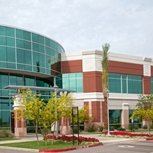
As the economy continues to improve and company profits rebound, many businesses will give 45 percent of their hard earned profits back to the federal government in the form of taxes. This leaves very little left over to reinvest back into the company.
For businesses that are capital intensive, offsetting profits with deductions can be challenging. This is because many invest significant money back into their building facility and infrastructure to support their business activity. These costs can take up to 39 years to write off under the tax reporting rules, impacting cash flows and working capital.
Help is available in the form of a strategic tax savings tool known as a Cost Segregation Study. This allows companies and individuals who have constructed, purchased, expanded, or remodeled any kind of real estate to increase cash flow by accelerating depreciation deductions and deferring federal and state income taxes. This presents a unique opportunity for additional accelerated deductions when combined with the recent favorable tax law changes under the Repair Regulations, which now allow companies to more favorably write off capitalized repairs and maintenance.
Cost Segregation
Cost segregation is the process of identifying personal property assets that are grouped with real property assets, and allocating the costs of those assets into appropriate classes of personal property. This enables you to considerably shorten the depreciation recovery period for tax reporting purposes from 39 years to 5, 7, and 15 years and possibly make it eligible for bonus depreciation. Real property that is eligible for cost segregation includes buildings used in a business or for the production of income (i.e. rental properties) that have been purchased, constructed, expanded, or remodeled by the taxpayer. In addition to new construction, taxpayers that have incurred significant costs for improvements and additions to existing buildings over the last 15 years would also benefit.
A cost segregation study can be accomplished through different forms, including a detailed engineering approach using actual cost records, cost estimate approaches, or a sample (or modeling) approach using similar facilities. Ideally, you will want to use qualified engineers and appraisers to perform a cost analysis, particularly for more costly properties, since an allocation made by a seasoned specialist is more likely to obtain the maximum tax benefit and also withstand an IRS challenge.
Typically, the engineer or specialist will analyze architectural drawings, mechanical and electrical plans, and other blueprints to segregate the structural and general building electrical and mechanical components from those linked to personal property. In addition, certain “soft costs” such as architect and engineering fees may be allocated to all components of the building.
Put simply, cost segregation studies allow businesses to lower current taxes through accelerating depreciation by allocating costs to assets with shorter depreciable lives. There are a number of other benefits, as well:
- Lower current tax payments can improve cash flow and free up funds for investment or current operating needs.
- A properly documented cost segregation study performed by a qualified specialist creates an audit trail for IRS purposes.
- A one-time catch up provision allows a current period deduction for the difference between depreciation deducted to date compared to the depreciation that could have been deducted using the cost segregation analysis.
- Cost segregation may provide other tax advantages if the separated components are replaced.
New Tax Laws That Will Enhance Cost Segregation Studies
Recent tax law changes have provided businesses more options and flexibility when looking to accelerate tax deductions to building additions and improvements. Careful review and implementation of these rules, combined with a cost segregation study, can greatly increase tax savings for businesses.
Under the new Repair Regulations, taxpayers now have the opportunity to write off the cost of old building components that are being replaced with new building components that require capitalization (e.g. you can write off the cost of your old roof for a new roof replacement). These new rules have also provided businesses with clearer guidance in determining when a building improvement can be expensed as a repair. Examples of building improvements that may now qualify as an immediate expense are roof membrane replacements, new air conditioning units, window replacements, and “refresh” office remodeling.
Businesses still have the opportunity on their current year tax returns to immediately expense or dispose of costs that have been improperly capitalized on their prior year tax returns as an improvement to the building or machinery under these new Repair Regulations.
Under the PATH Act of 2015, businesses now have the ability to take bonus depreciation on costs associated with improvements or new construction to the internal portion of a building that are assigned a 39 year life. Prior to this enactment, these costs were not eligible for bonus depreciation and needed to be depreciated over 39 years. For tax years ending in 2016 and 2017, bonus depreciation is at 50 percent and is scheduled to be phased down to 30 percent beginning in 2018.
If you constructed, purchased, expanded, or remodeled any kind of real estate for your business or rental property in the past 15 years, you should consider the advantage of having a cost segregation study. If you have capitalized any repairs and maintenance to your building in the last 15 years you should also consider the opportunities to write off the remaining basis of these costs in the current year under the new Repair Regulations. Consult with your business advisor and accounting firm to see if a Cost Segregation and Repair Regulation Study is a feasible strategy for you.
Carlo R. Ferri can be reached at Email or 215.441.4600.
You may also like:


